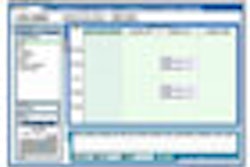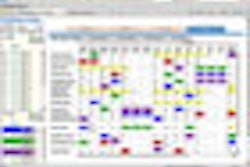International communications and information technology firm Harris of Melbourne, FL, has launched a concerted campaign to enter the commercial, nongovernmental healthcare arena. With four diverse divisions from which to borrow and combine information technologies, the company is sure to make its mark in the healthcare market.
The $4.2 billion company has created Healthcare Solutions to bring proprietary IT capabilities -- including imaging and digital content management -- to hospitals and other healthcare systems to help advance medical treatments, reduce costs, and, ultimately, save patients' lives.
Harris serves government and commercial markets in more than 150 countries through four major divisions: Government Communications Systems, RF Communications, Broadcast Communications, and Harris Stratex Networks. The company has some 16,000 employees, including approximately 7,000 engineers and scientists.
Healthcare roots
The origin of Healthcare Solutions began in July 2004 with Harris' acquisition of Orkand for approximately $66 million in cash. Orkand specialized in healthcare IT support for the U.S. government.
"Part of the acquisition for us was to get started in healthcare, doing IT work for the U.S. government in the healthcare area, and to expand beyond that by bringing more and more capabilities into this market," said Jeremy Wensinger, group president of Harris Government Communications Systems. "It has only been in the last year or so that we saw the opportunity to bring more technology into this space."
For the time being, Healthcare Solutions will reside within Harris' Palm Bay, FL-based Government Communications Systems. In June 2007, Harris named Jim Traficant as its vice president. Traficant, who joined Harris in 1999, most recently served as vice president of business development for the division.
In addition, Harris last month named Dr. Bart Harmon as chief medical officer (CMO) for Healthcare Solutions. Harmon previously served as CMO and director of information management for the Military Health System of the U.S. Department of Defense (DoD). For more than 10 years, Harmon helped to lead electronic health record initiatives within the DoD, and chaired the work group that created information sharing requirements between the DoD and the Veterans Health Administration.
Strategic plan
"We are going to bring more than just IT services into this phase," Wensinger said. "We are trying to bring as much of our capability that is relevant from our U.S. government business and our broadcast business, especially as healthcare transitions from an analog environment to digital technologies."
Orkand primarily provided IT administration and support for daily operations at the National Cancer Institute (NCI) and the National Institutes of Health. Harris continued that work with IT service and clinical trial support at the NCI. At the Centers for Disease Control and Prevention, Harris provides IT support for the National Health and Nutrition Examination Survey. The company also has a contract to deliver global healthcare IT for the U.S. Army Dental Corps and the U.S. Air Force health system.
Image processing and workflow automation are two areas in which Harris is looking to make its mark in radiology.
The company's technologies, for example, have "the ability to move very large datasets of images in the multigigabyte size," Traficant said. "We also can take digitized pathology samples (and) emulate a pathologist's workflow in a digital complex. We can take multigigabyte-size files (and) pan and zoom in real-time with no latency on the screen."
The multigigabyte technology "has been used primarily in government markets, but we know it can transfer immediately into healthcare," Traficant added. "So we are aggressively looking for opportunities and partners to help us make that happen."
Radiation oncology
Harris also is targeting radiation oncology therapy applications, taking advantage of its imaging capabilities from the intelligence community. Specifically, the technology would be designed to help accelerate the identification of cancerous tumors, and calculate the most appropriate treatment to radiate the cancerous tissues without damaging nearby healthy tissue.
"We have some tools that do some autocontouring ... to identify the major organs in a body," Traficant said, adding that the technology is in the early stages. "We think this will accelerate breakthroughs in treatment, the discovery of cures, and the significant reduction in costs in terms of overall workflow."
The company also is looking to tap Harris Broadcast Communications to expand wireless technologies to healthcare settings. Harris' InfoCaster takes digital content and presents it throughout an entire enterprise for educational purposes, among other functions. In healthcare, InfoCaster could deliver information to patients or continuing medical education credits to practitioners.
"The ability to take data, make it available in a time-sensitive way, and broadcast the information throughout an enterprise is something we can do today," Traficant said.
In the OR
Harris is hoping that wireless capabilities will be seen as an advantage in the operating room, where the correct data must reach the appropriate person on the right device at the point of care. In an operating room, for example, Harris could provide multiple feeds for patient images, text, video, and information that would be displayed on a monitor for surgeons.
"The faster we can help the technologies get into the digital domain, the faster point of care improves, cost becomes more efficient, and the quality of service will be better for the patient," Wensinger said.
Both Traficant and Wensinger believe Harris Healthcare Solutions can begin to make its mark in the commercial healthcare market by the middle of this year. "I think there are many opportunities for the things we do," Traficant added, "particularly with gastrointestinal endoscopy and cardiology, where video is used in the procedure and captures still images to archive."
Harris will show its healthcare IT technologies later this month at the 2008 Healthcare Information Management and Systems Society (HIMSS) meeting in Orlando, FL.
By Wayne Forrest
AuntMinnie.com staff writer
February 11, 2008
Related Reading
Harris enters healthcare market, January 16, 2008
Copyright © 2008 AuntMinnie.com



















